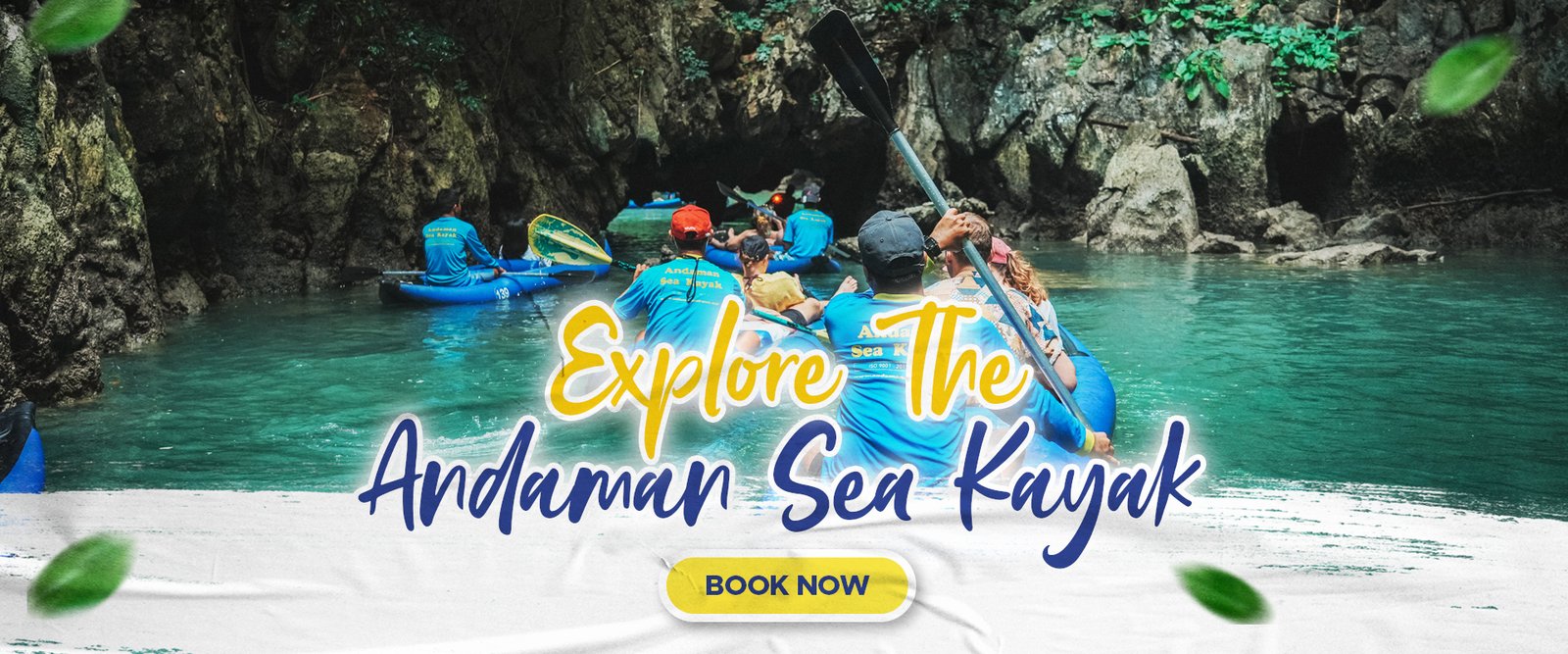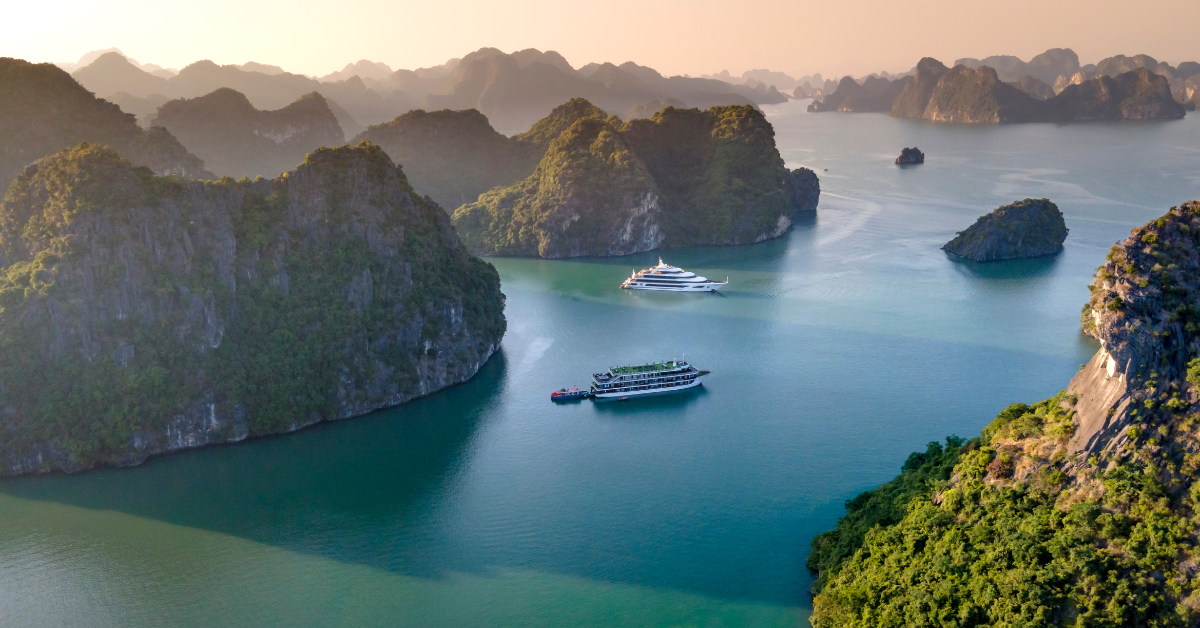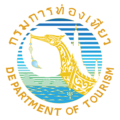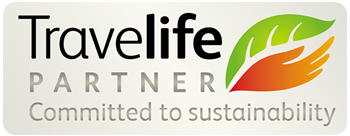The Importance of Eco-Friendly Kayaking Practices

The Importance of Eco-Friendly Kayaking Practices Preserving Phang Nga Bay’s Natural Beauty
Understanding the Environmental Impact of Kayaking Tourism
The crystal-clear waters, towering limestone karsts, and hidden lagoons of Phang Nga Bay have made it one of Thailand’s most sought-after destinations. As tourism grows in this pristine area, the environmental responsibility of tour operators becomes increasingly important. At Andaman Sea Kayak, we believe that sustainable kayaking practices are not just an option—they’re an obligation to preserve these natural wonders for future generations.
Eco-friendly kayaking represents a perfect balance between adventure tourism and environmental conservation. Unlike motorized water sports, kayaking has a minimal carbon footprint while allowing visitors to experience nature up-close in its most authentic form. However, even this low-impact activity requires careful management to ensure it doesn’t harm the delicate ecosystems of Phang Nga Bay.
This comprehensive guide explores the importance of environmentally responsible kayaking practices, the specific measures implemented by Andaman Sea Kayak, and how travelers can participate in protecting this UNESCO-recognized natural heritage site while enjoying unforgettable adventures.
The Ecological Significance of Phang Nga Bay
A Biodiverse Marine Ecosystem
Phang Nga Bay, located between Phuket Island and the mainland of the Malay Peninsula in southern Thailand, is home to an extraordinary level of biodiversity. The bay’s unique ecosystem includes:
- Mangrove forests that serve as natural barriers against coastal erosion and nurseries for juvenile marine species
- Coral reefs that support thousands of marine organisms and help maintain water quality
- Seagrass beds that provide crucial feeding grounds for endangered species like dugongs
- Limestone caves and hidden lagoons that host unique geological formations and specialized wildlife
These interconnected habitats form a delicate ecological balance that has evolved over thousands of years. Any disruption to this balance—whether through pollution, physical damage, or resource extraction—can have cascading effects throughout the ecosystem.
A World-Renowned Natural Wonder
Phang Nga Bay’s extraordinary landscape earned its recognition as part of the Ao Phang Nga National Park in 1981 and remains one of Thailand’s most breathtaking natural destinations. The bay features:
- Over 40 islands with towering limestone cliffs
- A network of sea caves accessible only during specific tide conditions
- Hidden lagoons surrounded by vertical rock walls
- The famous “James Bond Island” (Khao Phing Kan), featured in “The Man with the Golden Gun”
This natural beauty attracts visitors from around the world, creating both economic opportunities and environmental challenges for local communities.
Environmental Challenges Facing Phang Nga Bay
Tourism Pressure and Development
The increasing popularity of Phang Nga Bay as a tourist destination has led to several environmental challenges:
- Overcrowding: Popular sites can experience hundreds of visitors per day, causing stress to wildlife and degradation of natural areas.
- Waste management: Increased human presence produces more waste, which can end up in marine environments if not properly managed.
- Coastal development: Construction of tourism infrastructure can lead to habitat loss and increased runoff.
- Water pollution: Boat engines, sunscreen, and improper waste disposal contribute to water quality issues.
Climate Change Effects
Beyond direct human impacts, Phang Nga Bay faces challenges from global climate change:
- Rising sea levels threaten coastal habitats and cave systems
- Ocean acidification affects coral reefs and shell-forming organisms
- Changing weather patterns increase the risk of extreme weather events
- Warmer water temperatures can lead to coral bleaching and shifts in marine species distribution
The combination of local pressures and global climate effects creates an urgent need for sustainable tourism practices that minimize environmental impact.
Andaman Sea Kayak’s Eco-Friendly Approach
Our Environmental Philosophy
At Andaman Sea Kayak, environmental stewardship is embedded in our company values. Our approach is guided by several core principles:
- Minimal impact exploration: We believe in leaving no trace of our presence in the natural environments we visit.
- Educational emphasis: We see each tour as an opportunity to foster environmental awareness among our guests.
- Community engagement: We work with local communities to promote sustainable practices beyond our tours.
- Continuous improvement: We regularly evaluate and enhance our environmental practices based on the latest research and recommendations.
These principles inform every aspect of our operations, from the equipment we use to the training we provide our guides.
Sustainable Practices in Action
Equipment and Operations
Our commitment to eco-friendly kayaking begins with our equipment and operational choices:
- Human-powered kayaks: We exclusively use paddle-powered craft to eliminate water and noise pollution from motors.
- Eco-friendly materials: Our kayaks and equipment are selected for durability and minimal environmental impact.
- Responsible boat support: Our support vessels use fuel-efficient engines and follow strict protocols to minimize their environmental footprint.
- Waste reduction: We implement comprehensive waste reduction strategies, including reusable containers, water dispensers instead of plastic bottles, and biodegradable products.
Guide Training and Education
Our team consists of local guides with deep knowledge of Phang Nga Bay’s ecosystem:
- All guides receive extensive training in environmental protection and sustainable tourism practices
- Guides are educated about the bay’s geology, ecology, and cultural significance
- Regular workshops keep our team updated on environmental best practices
- Our guides participate in local conservation initiatives to deepen their environmental commitment
Tour Design and Management
We carefully design our kayaking tours to minimize environmental impact:
- Small group sizes: We limit the number of participants to reduce our collective impact on sensitive areas.
- Timing considerations: Our tours are scheduled to avoid peak hours at popular sites, reducing overcrowding.
- Seasonal adaptations: We adjust our routes based on seasonal wildlife activities, such as nesting periods.
- Designated routes: Our paths are chosen to avoid disturbing sensitive habitats while still showcasing the bay’s natural beauty.
Conservation Initiatives
Beyond our daily operations, Andaman Sea Kayak actively contributes to conservation efforts:
- Regular clean-up activities: Our team conducts beach and ocean clean-ups throughout Phang Nga Bay.
- Support for research: We collaborate with marine biologists and environmental researchers studying the bay’s ecosystem.
- Community education: We provide environmental education programs for local schools and communities.
- Advocacy work: We participate in local and regional advocacy for marine protection policies.
The Benefits of Eco-Friendly Kayaking for Visitors
Authentic Natural Experiences
Eco-friendly kayaking offers unique advantages for travelers seeking authentic connections with nature:
- Silence and serenity: Without engine noise, kayakers can hear natural sounds and spot wildlife that might otherwise be scared away.
- Close encounters: The low profile and minimal disturbance of kayaks allow for closer observation of marine life and birds.
- Access to hidden areas: Kayaks can navigate shallow waters and narrow passages inaccessible to larger boats.
- Mindful exploration: The pace of kayaking encourages mindfulness and deeper appreciation of the surrounding environment.
Health and Wellness Benefits
Beyond environmental benefits, kayaking offers significant advantages for physical and mental wellbeing:
- Full-body exercise: Paddling engages multiple muscle groups for a comprehensive workout.
- Stress reduction: Time spent in nature, especially around water, has been shown to reduce stress and anxiety.
- Skill development: Learning to navigate by kayak builds confidence and outdoor competence.
- Digital detox: Our tours provide a welcome break from screens and technology.
Cultural Connections
Eco-friendly tours create opportunities for meaningful cultural exchange:
- Local knowledge: Our guides share traditional ecological knowledge and cultural perspectives.
- Sustainable livelihoods: By supporting environmentally responsible businesses, visitors contribute to sustainable local economies.
- Respect for local communities: Our practices demonstrate respect for the natural resources that local communities depend on.
Best Practices for Eco-Friendly Kayakers
Before Your Tour
Preparing for an eco-friendly kayaking experience begins before you arrive:
- Research operators: Choose companies with clear environmental policies and practices.
- Pack responsibly: Bring reef-safe sunscreen, reusable water bottles, and minimal single-use items.
- Learn about the destination: Familiarize yourself with the ecology and cultural significance of the area you’ll be visiting.
- Consider carbon offsetting: Many organizations offer ways to offset the carbon footprint of your travel.
During Your Kayaking Experience
While exploring Phang Nga Bay’s wonders, maintain these eco-friendly practices:
- Follow guide instructions: Experienced guides know how to minimize impact on sensitive environments.
- Maintain appropriate distances: Keep a respectful distance from wildlife and sensitive geological formations.
- Leave no trace: Take all waste with you and avoid touching or removing anything from the natural environment.
- Minimize noise: Keep voices low to avoid disturbing wildlife and other visitors.
- Stay on designated routes: Avoid entering restricted areas or disturbing seabed habitats with your paddle.
After Your Adventure
Responsible tourism continues after your tour ends:
- Provide feedback: Share suggestions for improving environmental practices with your tour operator.
- Share knowledge responsibly: When posting on social media, avoid geotagging sensitive locations that could become overcrowded.
- Support conservation: Consider donating to local conservation organizations working to protect the areas you’ve visited.
- Apply lessons learned: Incorporate the environmental practices you’ve learned into your daily life back home.
The Future of Sustainable Kayaking in Phang Nga Bay
Emerging Technologies and Practices
The field of sustainable tourism continues to evolve with new approaches:
- Advanced materials: Newer kayak designs use recycled and biodegradable materials to reduce environmental impact.
- Digital monitoring: Technology allows for better tracking of environmental conditions and wildlife populations.
- Virtual pre-tour education: Online orientation can prepare visitors before they arrive, enhancing their understanding and compliance with best practices.
- Collaborative conservation: Tour operators increasingly work together on shared environmental initiatives.
Policy Developments
Government policies and industry standards are increasingly supporting sustainable tourism:
- Thailand’s tourism authorities have implemented more stringent environmental requirements for tour operators
- Certification programs recognize and promote businesses with strong sustainability practices
- Marine protected area regulations continue to evolve based on scientific research
- International tourism organizations provide frameworks for best practices in eco-tourism
Community-Led Conservation
The most promising developments in sustainable tourism involve local community leadership:
- Indigenous stewardship: Traditional knowledge increasingly informs conservation strategies.
- Community-based monitoring: Local residents help track environmental changes and enforce regulations.
- Diversified livelihoods: Communities develop multiple sustainable income streams to reduce pressure on natural resources.
- Educational initiatives: Local schools incorporate environmental education, creating a new generation of conservation advocates.
Conclusion: The Collective Responsibility for Phang Nga Bay’s Preservation
The breathtaking scenery and rich biodiversity of Phang Nga Bay represent a natural heritage that deserves our highest level of protection. As visitors to this extraordinary landscape, we have both the privilege of experiencing its beauty and the responsibility to ensure it remains intact for future generations.
Eco-friendly kayaking offers a model for how tourism can be a positive force for environmental conservation. By choosing operators committed to sustainable practices, following responsible visitor guidelines, and supporting local conservation efforts, travelers can help preserve the ecological integrity of Phang Nga Bay while enjoying meaningful and authentic experiences.
At Andaman Sea Kayak, we invite you to join us in this commitment to responsible exploration. Together, we can ensure that the hidden caves and lagoons of Phang Nga Bay continue to inspire wonder and appreciation for the natural world for many years to come.
References and Further Reading
For those interested in learning more about eco-friendly kayaking and the ecology of Phang Nga Bay, we recommend these resources:
- Ao Phang Nga National Park Official Information
- Thailand’s Marine and Coastal Resources Department Publications
- International Ecotourism Society Guidelines
- Leave No Trace Principles for Water-Based Activities
- Marine Conservation Society Resources
This article was prepared by Andaman Sea Kayak, a leading provider of eco-friendly kayaking experiences in Phang Nga Bay, Thailand. With over a decade of experience in sustainable tourism practices, our team is committed to combining unforgettable adventures with environmental stewardship.
For more information about our eco-friendly kayaking tours or to learn more about our environmental initiatives, please visit our website or contact our team directly.











